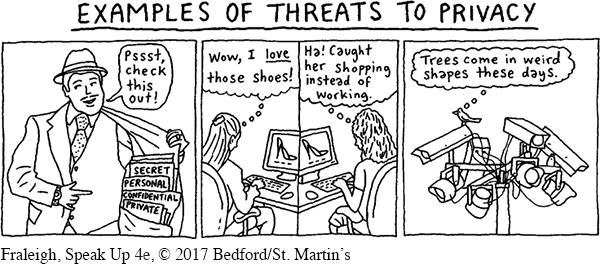Examples
An example is a sample or an instance that supports or illustrates a general claim. In everyday conversation, you probably use examples frequently. To illustrate, suppose you tell a friend that parking is difficult on your campus, pointing out that you couldn’t find a spot three times last week and your roommate drove around for thirty minutes the other day to find a space. In this case, you are using examples to support your claim that parking is difficult.

A brief example is a short instance (usually a single sentence) used to support or illustrate your claim. A set of three or four brief examples often can be used to great effect. The following excerpt shows how such examples can be used to support the claim that Americans’ privacy is at risk:
A survey of 381 university admissions officials found that about three in ten had checked an applicant’s social media pages and found material that harmed a candidate’s chance for admission.6
There is a growing trend in the corporate world to search social media to track behaviors of current employees and learn more about prospective workers.7
Page 234
Cities are increasingly investing in software that analyzes citywide surveillance videos and reports anything it deems “suspicious or abnormal behavior.” Sales of this technology are expected to reach $3.2 billion by 2016.8
You also can use an extended example to illustrate a point. An extended example provides many details about the instance being used, giving your audience a deeper and richer picture of your point. The following extended example describes a new threat to privacy from smart televisions:
A firestorm was created when it was reported that smart televisions could track private talks in the home. After the manufacturer warned customers that technology enabling vocal commands to their televisions could also record and send private speech to a third party, there was an outcry on social media. One activist compared the company policy to a depiction of a telescreen that could track conversations in the novel 1984.9